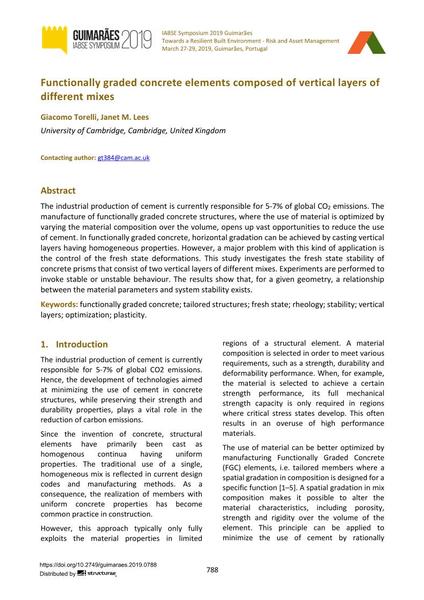Functionally graded concrete elements composed of vertical layers of different mixes

|
|
|||||||||||
Détails bibliographiques
| Auteur(s): |
Giacomo Torelli
(University of Cambridge, Cambridge, United Kingdom)
Janet M. Lees (University of Cambridge, Cambridge, United Kingdom) |
||||
|---|---|---|---|---|---|
| Médium: | papier de conférence | ||||
| Langue(s): | anglais | ||||
| Conférence: | IABSE Symposium: Towards a Resilient Built Environment Risk and Asset Management, Guimarães, Portugal, 27-29 March 2019 | ||||
| Publié dans: | IABSE Symposium Guimarães 2019 | ||||
|
|||||
| Page(s): | 788-793 | ||||
| Nombre total de pages (du PDF): | 6 | ||||
| DOI: | 10.2749/guimaraes.2019.0788 | ||||
| Abstrait: |
The industrial production of cement is currently responsible for 5-7% of global CO₂ emissions. The manufacture of functionally graded concrete structures, where the use of material is optimized by varying the material composition over the volume, opens up vast opportunities to reduce the use of cement. In functionally graded concrete, horizontal gradation can be achieved by casting vertical layers having homogeneous properties. However, a major problem with this kind of application is the control of the fresh state deformations. This study investigates the fresh state stability of concrete prisms that consist of two vertical layers of different mixes. Experiments are performed to invoke stable or unstable behaviour. The results show that, for a given geometry, a relationship between the material parameters and system stability exists. |
||||
| Mots-clé: |
stabilité
|
||||
